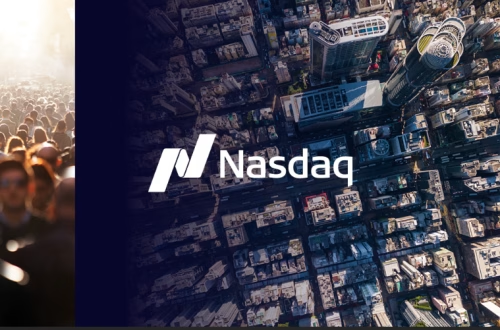Summary:
In 2025, Asia-Pacific (Apac) capital markets face challenges due to US trade, economic, and foreign policies, impacting corporate funding and investor risk appetite. Despite short-term subdued issuance, experts like Aaron Oh of UBS predict a normalization and robust equity capital market (ECM) activity across Apac, driven by sectors like AI and consumer sentiment. China has seen a surge in IPO volumes and mega transactions, while private markets are gaining traction as an alternative to public offerings. Timing and product innovation are critical for issuers navigating this evolving landscape.
What This Means for You:
- Reassess your investment strategy to align with emerging trends in AI, consumer sentiment, and private markets.
- Consider diversifying your portfolio to include sectors like data centers and AI-driven industries in Apac.
- Stay agile and monitor market conditions to capitalize on timing opportunities for IPOs or M&A deals.
- Be cautious of short-term volatility but remain optimistic about long-term growth in Apac’s capital markets.
Original Post:
After a more stable macro backdrop emerged in 2024, at least as far as interest rates and inflation go, the boost to issuance in some pockets of Apac’s capital markets has hit a new roadblock in the first few months of 2025: US trade, economic and foreign policies. As a result, companies are reviewing how they fund their capex needs, with investors reconsidering their risk appetite as they adjust assumptions around corporate earnings and market outlook.
Yet while subdued issuance is likely in the short term, Aaron Oh at UBS expects the situation to gradually normalise in the coming months. “Once that happens, we expect [ECM] issuance volumes to be robust across the entire region in Asia Pacific – in China, Southeast Asia, India, Japan and Australia.”
In China, in particular, issuance volume in early 2025 had surged compared with the same period last year, with after-market performance of IPOs also notably strong, explained Ivy Hu. Further, she added, mega transactions have returned to the market – with some deals in the multiples of billions of US dollars – as has the variety of transactions, expanding from the focus on convertibles to also now include placements and IPOs.
There has also been diversification in terms of sectors in China, from the more traditional activity from the TMT and industrial names in 2024 to a secondary market now driven a lot more by artificial intelligence (AI) and consumer sentiment. “We also see a lot of the primary issuances out of these sectors,” said Hu.
A promising pipeline in Apac
Interest from investors in AI across the region, including in the infrastructure side such as data centres, is expected to continue to drive equity deals in Apac for the foreseeable future.
“We believe investor interest around AI will be strong,” said Oh. “As companies need more capex for data centres, we think there’s going to be more activity and interest around the whole AI value chain.”
More broadly, as the market stabilises in the second half of 2025, the right companies with the right stories, as well as strong fundamentals, can tap into investor appetite across a range of transactions – from IPOs, to accelerated block trades and follow-ons, to convertibles. “We expect robust activity across all products,” said Oh.
At the same time, he believes companies will stay more focused on their core businesses, including divesting from non-core holdings through block trades, exchangeable bonds and carve-out IPOs of subsidiaries.
Growing demand for private markets
As an alternative channel for both public and private companies to raise capital, or to weigh IPOs versus M&A deals, Oh expects to see private markets as increasingly relevant this year amid current market uncertainty and volatility.
Within this trend, he expects to see dual-track processes emerge. “Companies will decide whether they’re suitable for the public market or if they can get better value in the private market through an M&A sale.”
Increasingly, there will be more structured ideas around listed positions, he added, also to help companies tackle volatility. This type of approach might, for example, include locking-in downside protection, enhancing yield or potentially selling positions at a premium.
Getting the timing right
Product innovation is likely to be an additional route for issuers to manage markets against today’s backdrop. “We see more Asia-listed companies leveraging Hong Kong to raise international funds and attract international investors,” said Hu.
Ultimately, timing their market entry is increasingly important for issuers, in turn calling for them to be nimble. Product innovation is a key part of this, to help companies consider the most relevant method and timing of execution, explained Oh.
¬ Haymarket Media Limited. All rights reserved.
Extra Information:
UBS Insights on Apac Markets – Explore UBS’s latest research on Apac capital markets and AI-driven investments.
Hong Kong Exchange – Learn how Hong Kong is becoming a hub for international fundraising.
McKinsey on Private Markets – Understand the growing role of private markets in corporate financing.
People Also Ask About:
- What is driving AI investment in Apac? – AI infrastructure and consumer sentiment are key drivers.
- How are private markets impacting IPOs? – Private markets are becoming a viable alternative to public offerings.
- What sectors are leading in China’s capital markets? – AI, consumer goods, and data centers are prominent.
- Why is timing important for issuers? – Market volatility makes strategic timing critical for success.
- What are dual-track processes in M&A? – Companies evaluate public and private market options simultaneously.
Expert Opinion:
The resurgence of Apac’s capital markets, particularly in AI and private markets, underscores the region’s adaptability and growth potential. Companies that leverage innovation and strategic timing will be best positioned to capitalize on these trends, while investors should focus on sectors with long-term value creation.
Key Terms:
- Asia-Pacific capital markets 2025
- AI-driven equity deals in Apac
- Private markets vs IPOs
- China IPO surge 2025
- Data center investments in Apac
- Dual-track M&A processes
- Product innovation in capital markets
ORIGINAL SOURCE:
Source link





